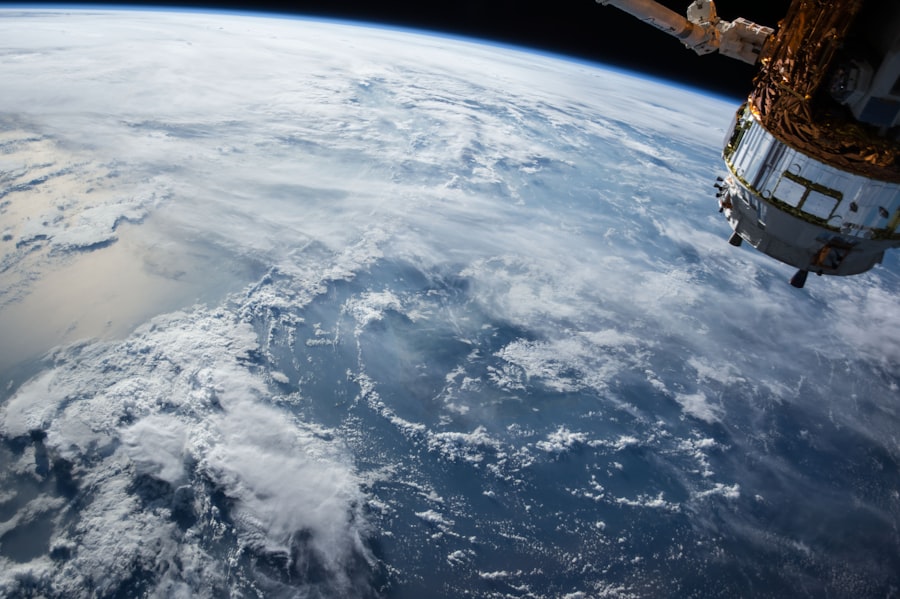Space exploration represents one of humanity’s most ambitious endeavors, a quest that transcends the boundaries of our planet and seeks to unravel the mysteries of the cosmos. From the early days of rocketry to the sophisticated missions that now probe the depths of our solar system, the journey into space has been marked by innovation, curiosity, and an insatiable desire to understand our place in the universe. The exploration of space is not merely a scientific pursuit; it embodies the spirit of adventure and the quest for knowledge that has driven human progress throughout history.
The significance of space exploration extends beyond scientific discovery. It has profound implications for technology, international collaboration, and even philosophical perspectives on life itself. As we venture into the unknown, we are not only expanding our understanding of celestial bodies but also developing technologies that have far-reaching applications on Earth.
The challenges faced in this endeavor have spurred advancements in engineering, materials science, and computer technology, leading to innovations that benefit society in myriad ways. Thus, space exploration is a multifaceted journey that intertwines science, technology, and the human experience.
Key Takeaways
- Space exploration has been a key area of scientific and technological advancement, allowing us to learn more about the universe and our place in it.
- Orbit exploration has a rich history, from the first satellite, Sputnik, to the International Space Station and beyond.
- Understanding the science of orbits and space travel is crucial for successful exploration and utilization of space.
- Challenges such as space debris, radiation, and long-duration space travel must be overcome for continued orbit exploration.
- The future of orbit exploration holds exciting possibilities, including potential colonization of other planets and asteroid mining.
The History of Orbit Exploration
Theoretical Foundations
The concept of orbiting celestial bodies was first articulated by figures such as Johannes Kepler in the 17th century, who formulated laws governing planetary motion.
The Dawn of Space Exploration
However, it wasn’t until the mid-20th century that humanity took its first tangible steps into space. The launch of Sputnik 1 by the Soviet Union in 1957 marked a watershed moment in this history, as it became the first artificial satellite to orbit Earth. This event not only ignited the space race between the United States and the Soviet Union but also captured the imagination of people worldwide.
Advancements and Milestones
Following Sputnik’s success, a series of missions expanded our understanding of orbits and their dynamics. The United States responded with its own satellite program, culminating in the launch of Explorer 1 in 1958. This satellite provided critical data about cosmic rays and demonstrated the feasibility of placing objects into orbit. The subsequent decade saw significant milestones, including the first human in space, Yuri Gagarin, in 1961, and the establishment of communication satellites that revolutionized global communication. The Apollo program further propelled orbit exploration into new realms, culminating in the historic moon landing in 1969, which showcased not only human ingenuity but also the potential for interplanetary exploration.
The Science of Orbits and Space Travel

Understanding orbits is fundamental to space travel and exploration. An orbit is essentially a gravitationally curved trajectory around a celestial body, governed by Newton’s laws of motion and universal gravitation. The balance between an object’s velocity and the gravitational pull of the body it orbits determines its path. For instance, satellites in low Earth orbit (LEO) travel at speeds exceeding 28,000 kilometers per hour (about 17,500 miles per hour) to counteract Earth’s gravitational pull. This delicate interplay between speed and gravity allows satellites to maintain stable orbits without falling back to Earth.
The science behind orbits also encompasses various types of trajectories used for different missions. Geostationary orbits, for example, allow satellites to remain fixed over a specific point on Earth, making them ideal for communication purposes. In contrast, polar orbits enable satellites to pass over the entire surface of the Earth as the planet rotates beneath them, providing comprehensive coverage for imaging and reconnaissance.
Understanding these orbital mechanics is crucial for mission planning and execution, as even minor miscalculations can lead to mission failure or loss of valuable data.
The Challenges of Orbit Exploration
| Challenges | Description |
|---|---|
| Space Debris | Increasing amount of debris in orbit poses collision risks to spacecraft. |
| Radiation | High levels of radiation in space can pose health risks to astronauts and affect electronic equipment. |
| Communication | Maintaining constant communication with spacecraft in orbit can be challenging due to distance and signal interference. |
| Navigation | Precise navigation and maneuvering in orbit is crucial for successful missions. |
| Resource Limitations | Limited resources such as fuel and power can constrain the duration and scope of orbit exploration missions. |
Despite significant advancements in technology and knowledge, orbit exploration presents numerous challenges that must be addressed to ensure successful missions. One of the primary obstacles is the harsh environment of space itself. Factors such as radiation exposure, extreme temperatures, and microgravity can adversely affect both equipment and human health.
For instance, astronauts aboard the International Space Station (ISS) are exposed to higher levels of cosmic radiation than those on Earth, necessitating protective measures to mitigate potential health risks. Another significant challenge lies in the complexity of launching payloads into orbit. Achieving escape velocity—approximately 11.2 kilometers per second (about 25,000 miles per hour)—requires immense energy and precision.
Rockets must be meticulously designed to withstand the stresses of launch while ensuring that payloads reach their intended orbits. Additionally, space debris poses a growing threat to operational satellites and spacecraft. Collisions with even small fragments can cause catastrophic damage, prompting ongoing efforts to track and mitigate space debris through international cooperation.
The Future of Orbit Exploration
The future of orbit exploration is poised for remarkable advancements as new technologies emerge and international collaboration expands. One promising area is the development of reusable launch systems, which aim to reduce costs and increase access to space. Companies like SpaceX have pioneered reusable rocket technology with their Falcon 9 rocket, significantly lowering the price per launch and enabling more frequent missions.
This innovation could democratize access to space for research institutions and commercial enterprises alike. Moreover, upcoming missions are set to explore beyond Earth’s orbit with ambitious goals such as returning humans to the Moon through NASA’s Artemis program and eventually sending crewed missions to Mars. These endeavors will require not only advancements in propulsion systems but also innovations in life support systems capable of sustaining human life during extended missions.
As we look ahead, international partnerships will play a crucial role in pooling resources and expertise to tackle these complex challenges while fostering a spirit of cooperation among nations.
The Impact of Orbit Exploration on Earth

Revolutionizing Communication
One significant contribution is in the realm of communication; satellites have revolutionized how we connect with one another across vast distances. From television broadcasts to internet connectivity in remote areas, satellite technology has transformed communication infrastructure worldwide.
Monitoring the Planet
Earth observation satellites provide invaluable data for monitoring climate change, natural disasters, and agricultural practices. These satellites collect information on weather patterns, land use changes, and environmental conditions that inform policy decisions and disaster response strategies.
Environmental Sustainability
For instance, NASA’s Landsat program has been instrumental in tracking deforestation and urbanization over decades, providing critical insights into environmental sustainability efforts.
The Role of Satellites in Orbit Exploration
Satellites serve as essential tools in orbit exploration, enabling a wide range of scientific research and practical applications. They come in various forms—ranging from small CubeSats to large geostationary satellites—each designed for specific purposes.
This technology has transformed industries such as transportation, logistics, and emergency services by enabling precise navigation capabilities. As satellite technology continues to evolve, we can expect even more innovative applications that enhance our understanding of both Earth and outer space.
The Human Experience of Orbit Exploration
The human experience of orbit exploration is characterized by both awe-inspiring achievements and profound challenges faced by astronauts who venture beyond our planet’s atmosphere. The psychological effects of space travel are significant; astronauts must adapt to microgravity conditions while coping with isolation from family and friends during long missions aboard spacecraft like the ISS. NASA has implemented rigorous training programs that prepare astronauts for these challenges by simulating space conditions on Earth.
Moreover, the perspective gained from viewing Earth from space profoundly impacts astronauts’ worldviews. Many report experiencing a sense of interconnectedness with humanity upon witnessing our planet’s fragility from above—a phenomenon often referred to as the “Overview Effect.” This transformative experience has inspired astronauts to advocate for environmental stewardship and global cooperation upon their return to Earth. As humanity continues its journey into space, the stories and experiences shared by those who have ventured beyond our atmosphere will undoubtedly shape our collective understanding of what it means to explore the cosmos.
Each mission adds another chapter to this ongoing narrative—a testament to human curiosity and resilience in the face of the unknown.
If you are interested in exploring the intersection of mathematics education, history, and culture, you may enjoy reading the article Exploring the Intersection of Mathematics Education, History, and Culture. This article delves into how mathematics has been taught throughout history and how cultural influences have shaped the way we learn and understand mathematical concepts. It provides a fascinating look at the evolution of mathematics education and its impact on society.





















+ There are no comments
Add yours